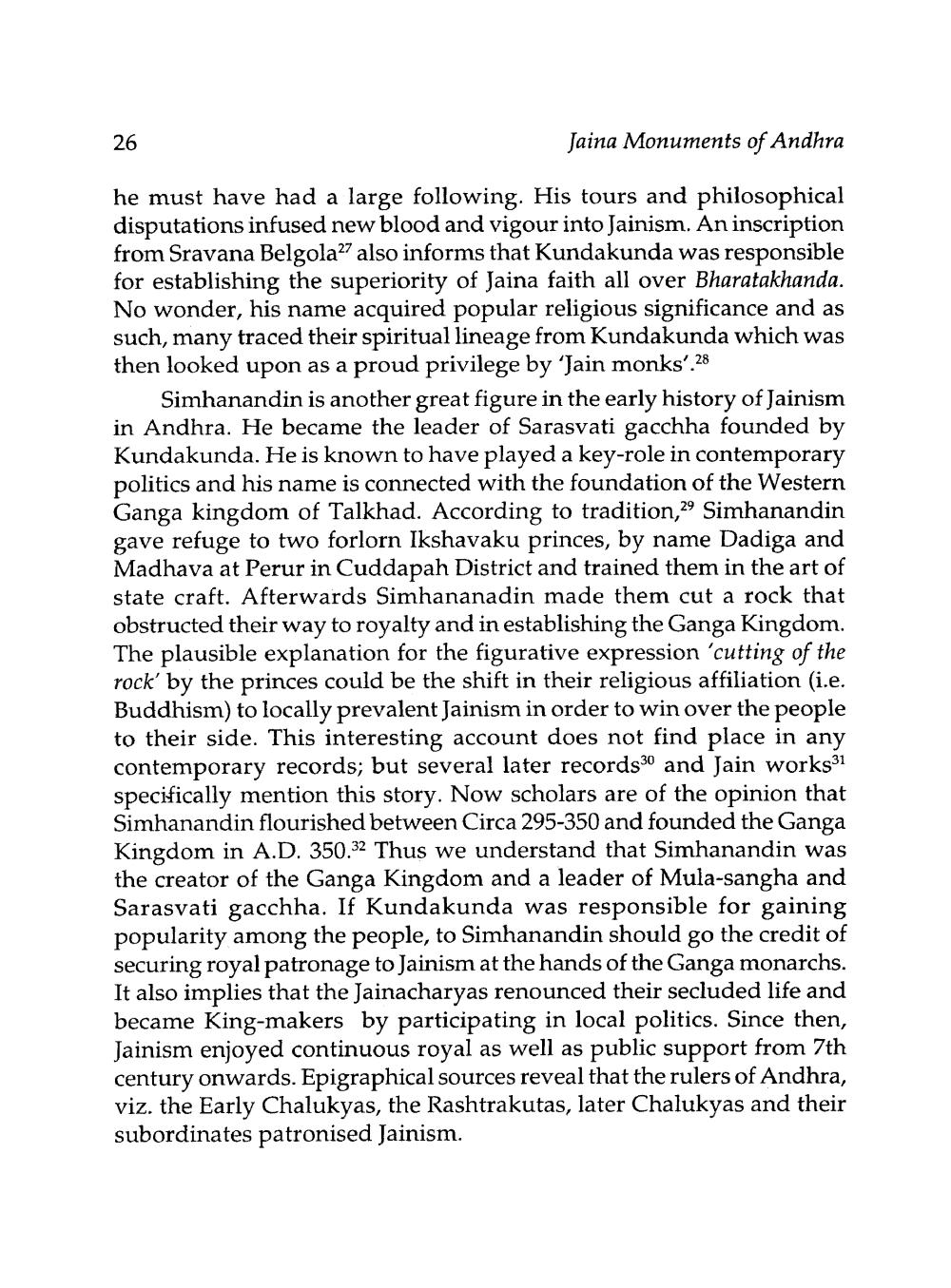________________
26
Jaina Monuments of Andhra
he must have had a large following. His tours and philosophical disputations infused new blood and vigour into Jainism. An inscription from Sravana Belgola27 also informs that Kundakunda was responsible for establishing the superiority of Jaina faith all over Bharatakhanda. No wonder, his name acquired popular religious significance and as such, many traced their spiritual lineage from Kundakunda which was then looked upon as a proud privilege by “Jain monks'.28
Simhanandin is another great figure in the early history of Jainism in Andhra. He became the leader of Sarasvati gacchha founded by Kundakunda. He is known to have played a key-role in contemporary politics and his name is connected with the foundation of the Western Ganga kingdom of Talkhad. According to tradition,29 Simhanandin gave refuge to two forlorn Ikshavaku princes, by name Dadiga and Madhava at Perur in Cuddapah District and trained them in the art of state craft. Afterwards Simhananadin made them cut a rock that obstructed their way to royalty and in establishing the Ganga Kingdom. The plausible explanation for the figurative expression 'cutting of the rock' by the princes could be the shift in their religious affiliation (i.e. Buddhism) to locally prevalent Jainism in order to win over the people to their side. This interesting account does not find place in any contemporary records; but several later records 30 and Jain works31 specifically mention this story. Now scholars are of the opinion that Simhanandin flourished between Circa 295-350 and founded the Ganga Kingdom in A.D. 350.32 Thus we understand that Simhanandin was the creator of the Ganga Kingdom and a leader of Mula-sangha and Sarasvati gacchha. If Kundakunda was responsible for gaining popularity among the people, to Simhanandin should go the credit of securing royal patronage to Jainism at the hands of the Ganga monarchs. It also implies that the Jainacharyas renounced their secluded life and became King-makers by participating in local politics. Since then, Jainism enjoyed continuous royal as well as public support from 7th century onwards. Epigraphical sources reveal that the rulers of Andhra, viz. the Early Chalukyas, the Rashtrakutas, later Chalukyas and their subordinates patronised Jainism.




